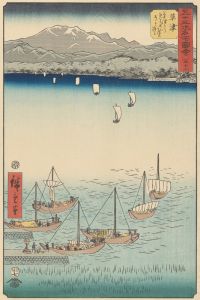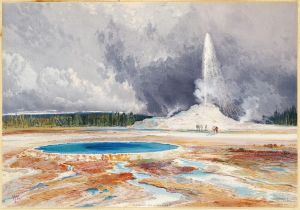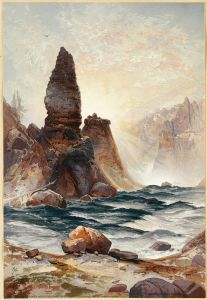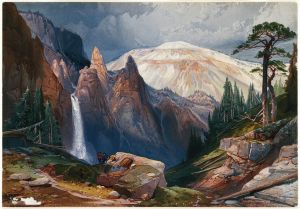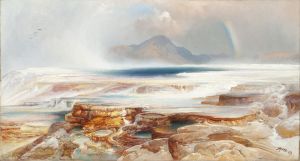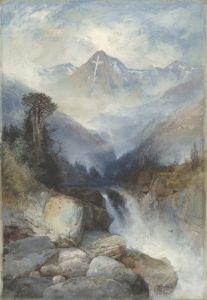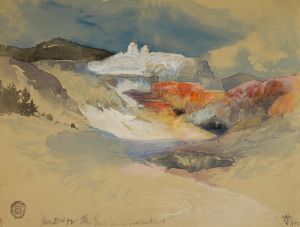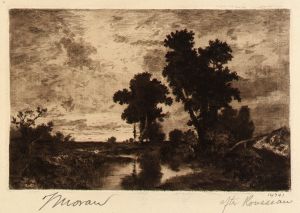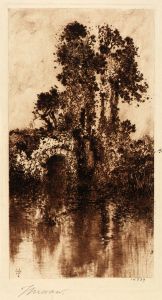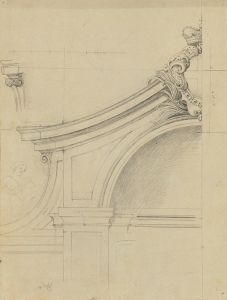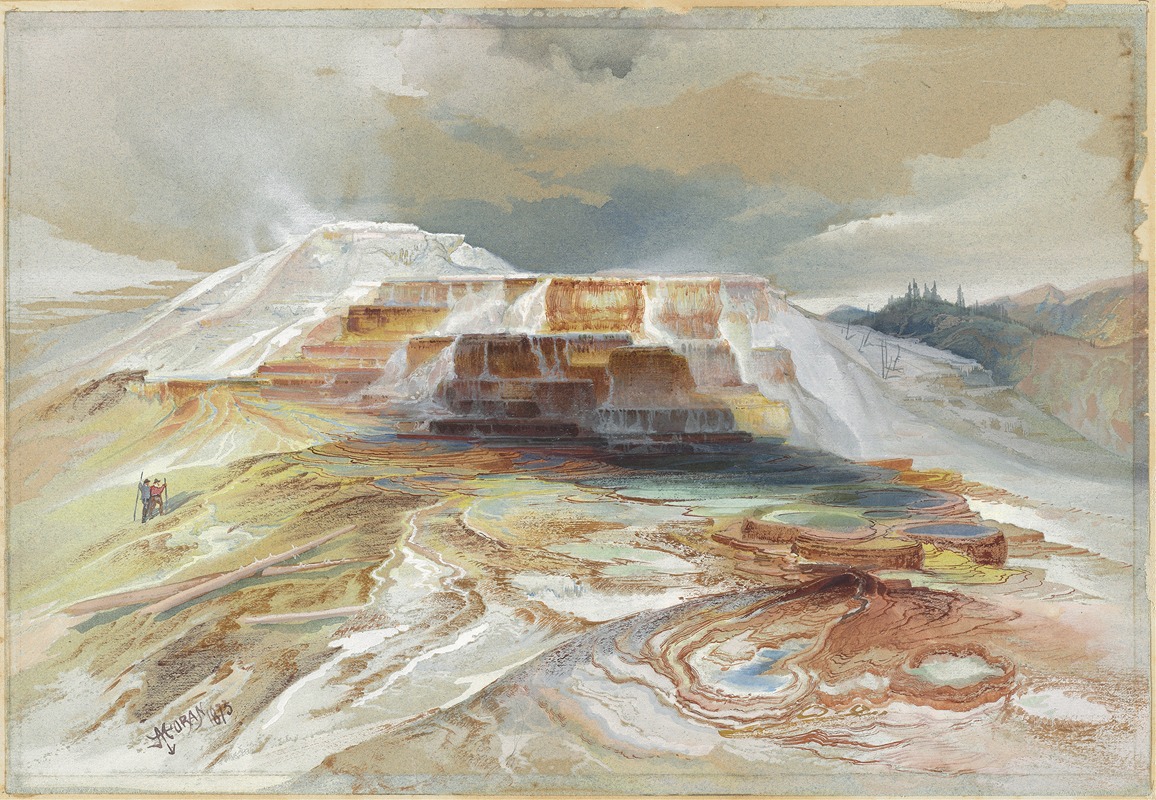
Hot Springs of Gardiner’s River, Yellowstone
A hand-painted replica of Thomas Moran’s masterpiece Hot Springs of Gardiner’s River, Yellowstone, meticulously crafted by professional artists to capture the true essence of the original. Each piece is created with museum-quality canvas and rare mineral pigments, carefully painted by experienced artists with delicate brushstrokes and rich, layered colors to perfectly recreate the texture of the original artwork. Unlike machine-printed reproductions, this hand-painted version brings the painting to life, infused with the artist’s emotions and skill in every stroke. Whether for personal collection or home decoration, it instantly elevates the artistic atmosphere of any space.
"Hot Springs of Gardiner’s River, Yellowstone" is a painting by the renowned American artist Thomas Moran, who is best known for his depictions of the American West. Moran played a significant role in popularizing the natural beauty of the Yellowstone region through his art, which contributed to the establishment of Yellowstone as the first national park in the United States in 1872.
Thomas Moran was born in 1837 in Bolton, England, and immigrated with his family to the United States as a child. He became a prominent figure in the Hudson River School, a group of landscape painters known for their romantic portrayal of the American wilderness. Moran's work is characterized by its dramatic use of color and light, capturing the grandeur and sublime beauty of natural landscapes.
The painting "Hot Springs of Gardiner’s River, Yellowstone" is one of Moran's many works inspired by his travels to the Yellowstone region. In 1871, Moran joined the Hayden Geological Survey of 1871, led by Ferdinand V. Hayden, which was the first government-sponsored exploration of the area. During this expedition, Moran created numerous sketches and watercolors that would later serve as the basis for his larger oil paintings.
Moran's artwork, including "Hot Springs of Gardiner’s River, Yellowstone," played a crucial role in influencing public opinion and government policy regarding the preservation of Yellowstone. His vivid and detailed depictions of the geysers, hot springs, and other geothermal features of the region captured the imagination of the American public and Congress. These paintings, along with photographs by William Henry Jackson, were instrumental in convincing lawmakers of the unique and irreplaceable nature of the Yellowstone landscape, leading to the establishment of Yellowstone National Park.
"Hot Springs of Gardiner’s River, Yellowstone" exemplifies Moran's ability to convey the dynamic and colorful nature of geothermal features. The painting likely depicts the vibrant colors and steaming waters of the hot springs, set against the backdrop of the rugged terrain and expansive skies typical of the Yellowstone region. Moran's use of color and composition not only captures the physical attributes of the landscape but also evokes a sense of wonder and awe.
Moran's contributions to American art and conservation are significant. His paintings continue to be celebrated for their artistic merit and historical importance. Today, works like "Hot Springs of Gardiner’s River, Yellowstone" are held in high regard and can be found in major art collections and museums, serving as a testament to Moran's enduring legacy and the pivotal role his art played in the conservation movement.
Through his art, Thomas Moran helped to shape the perception of the American West as a place of natural beauty and wonder, deserving of preservation for future generations. His paintings remain a vital part of America's cultural and artistic heritage.





